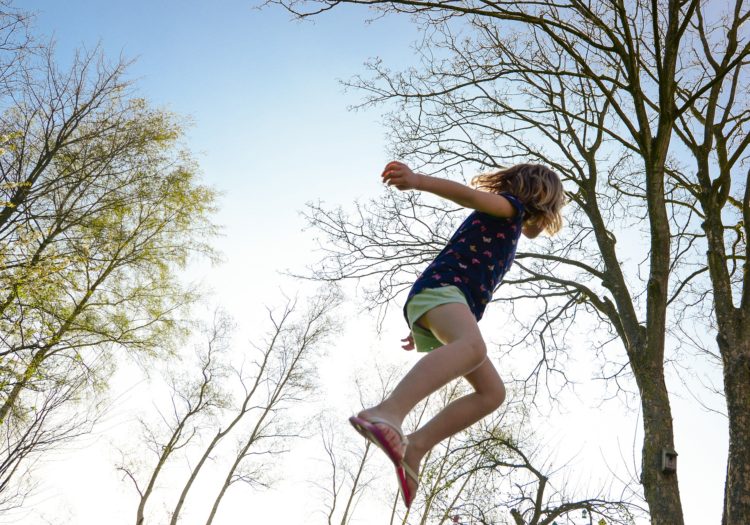You’ve all seen it
The condition which affects millions of Canadians every single year, and costs our health care system billions.
Osteoporosis.
Like you, I hate math, but love statistics, so if you’ll let me have this indulgence…
Osteoporosis will affect 1 in 3 Canadian women, and one in 5 Canadian men.
Fractures from osteoporosis are more common than having a stroke, heart attack or breast cancer combined
Every time an osteoporotic patient falls and breaks their hip, it costs around $22,000 to repair, and upwards of an additional $40,000 if they then become institutionalized.
28% of women and 37% of men who suffer an osteoporotic hip fracture will die as a result, within the following year.
For such a pervasive issue, very little thought is given to assessment or prevention until people hit their 40s and 50s – but by then it is often too late. The real time to start is age 6-12.
A study published in the Journal of Paediatrics in 2000 found that by modifying regular physical education classes to include more jumping, skipping and hopping, children were found to have significantly higher bone mineral density at 8 month follow up compared to children who participated in the regularly scheduled physical education classes.
The study, conducted on Canadian kids in the third and fourth grade found that by simply implementing hopping and jumping movements into the regular phys-ed curriculum led to increased bone density at the trochanter of the hip, one of the areas of the hip most commonly broken in a fall in an osteoporotic patient.
Previous studies have also indicated that the time to most effectively build strong bones is in the pre-teen years, not after 50, when most people start to think about it.
In fact, Osteoporosis Canada even refers to osteoporosis as “a paediatric disease with geriatric consequences” (not unlike structural distortions in the spine, developing in childhood and adolescence and developing silently until adulthood).
For such a prevalent issue in the elderly population, the solution is profoundly simple…
And unlike other ‘prevention’ strategies, which are actually just early detection, implementing a solution is childhood could ACTUALLY prevent this condition from every occurring in an individual.
The easiest solution would be for changes to be implemented into the Canadian phys-ed curriculum to reflect the recommendations of this study…. but since most of us don’t have that much time to kill, here’s 3 easily implemented tips to help your kids develop strong bones and ward off osteoporosis in their later years:
1. Shock Loading
Put down your jumper cables, this is a different kind of shock.
The reason the jumping, hopping games and play made a difference in bone density at the hip in the studies mentioned above is due to Wolff’s Law – which basically means that bone grows fastest and most dense in the areas under the highest stress load.
Jumping and bouncing ballistically stresses bones, causing your body to lay down more bone to reinforce it.
In the study, the exercise changes that were implemented were very simple, and cost nothing – 10 tuck jumps, 3 times a week plus jumping, hopping and skipping twice weekly during physical education classes.
The additional exercises took no extra time, resources or training, and were implemented as games, dances and gymnastic activities that the children were already familiar with – for example, playing tag but instead of running, all players become frogs or kangaroos and have to hop around to catch each other.
2. Eat More Greens
Healthy bone formation requires a constant and adequate supply of nutrients, including calcium, potassium, magnesium, phosphorus, Vitamin D, Vitamin K and protein, many of which are available in dark leafy vegetables.
Dark green leafy vegetables, including spinach, kale and turnip leaves are high in nutrients that are more bio-available than that found in dairy products. Eating a variety of nutritious vegetables has a tonne of health benefits (which is why it is featured as Step 3 of Eat By Design.)
3. Get Lifting
Despite what rumors and myths you may have heard, weight training for kids is not dangerous, IF lifts are performed with good technique and properly supervised.
In fact, it is necessary to properly develop bones, joints and muscles in a healthy, functional way.
Lift Heavy is one of the fundamental pillars of Move By Design, and is an essential part of raising a healthy child. PE class alone is not enough to fulfill the movement requirements for a healthy, growing child.
If you’re local in Kanata, Crossfit 613 has a great kids program that enables kids to develop strength, mobility and fitness, and is, most importantly, FUN!
To learn more about how you and your child can fulfill all the necessary requirements for healthy movement, join us at our next Move By Design Seminar.
 Dr. David Hawkes is a wellness expert and martial arts enthusiast. Born and raised in Perth, Western Australia, Dr Hawkes’ passion for health and wellness has led him here to Kanata, literally halfway around the world. After graduating from Murdoch University, Dr. Hawkes ran a successful practice in Perth’s western suburbs before moving to Ottawa. Dr. Hawkes has a special interest in family wellness, as well as Peak Performance. He is passionate about helping individuals and families lead their extraordinary lives.
Dr. David Hawkes is a wellness expert and martial arts enthusiast. Born and raised in Perth, Western Australia, Dr Hawkes’ passion for health and wellness has led him here to Kanata, literally halfway around the world. After graduating from Murdoch University, Dr. Hawkes ran a successful practice in Perth’s western suburbs before moving to Ottawa. Dr. Hawkes has a special interest in family wellness, as well as Peak Performance. He is passionate about helping individuals and families lead their extraordinary lives.

